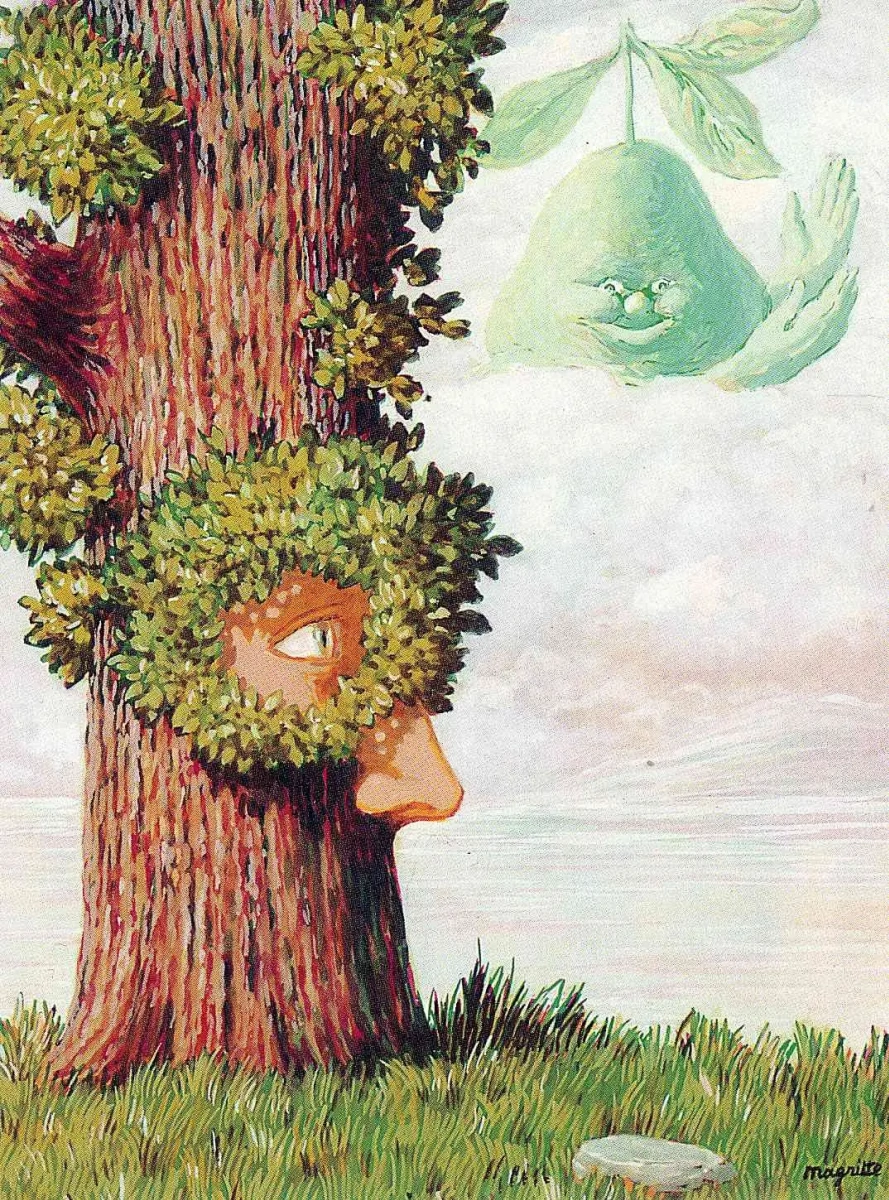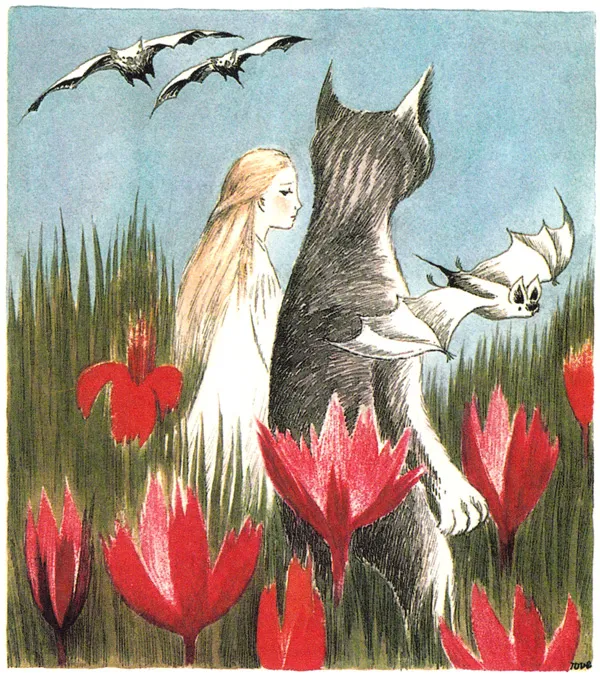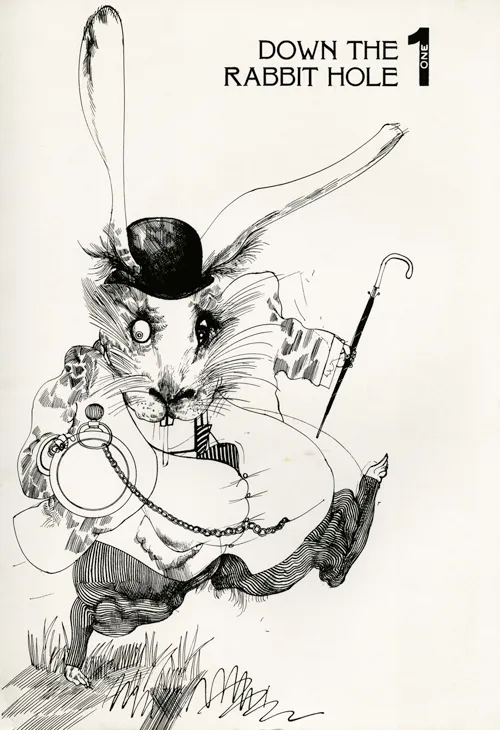What: 2 art exhibitions on Lewis Carroll’s Alice's Adventures in Wonderland.
Where: Strasbourg; MAMCS and Tomi Ungerer museum
When: 19 nov – 26 feb 2023

I arrived in France on the 23rd of February, just in time for the exhibit. I’d read the Alice books during my literature degree and was already an admirer of the Carrollian world and his language play. So naturally I was beyond excited to visit this particular art exhibit and it surpassed all my expectations.
In this edition of Bringing the Exhibition to You: I will take you through SurréAlice; an exhibition in two parts. Lewis Carroll et les surréalistes in Musee d’art moderne et contemporain de Strasbourg (MAMCS), and Illustr’Alice in Musee Tomi Ungerer centre international de l’illustration.
Lewis Carroll and the Surrealists
Query: when we are dreaming and, as often happens, have a
dim consciousness of the fact and try to wake, do we not say and
do things which in waking life would be insane? May we not then
sometimes define insanity as an inability to distinguish which is
the waking and which the sleeping life? We often dream without
the least suspicion of unreality: "sleep hath its own world," and it
is often as lifelike as the other.
Lewis Carroll, dairies, vol 1.
Alice’s difficulty in differentiating dream from reality is the central theme in both the Alice books. Dream logic is a shared interest of both Carroll and the surrealists, which further added to the relevance of this exhibit.
More on Surrealism
We decided to first visit SurréAlice in MAMCS. It was a rainy morning and there was a queue outside the museum (somehow in my memories this museum has always been under a perpetual rain cloud). Once we were inside, tickets bought and scanned, we came face to face with the giant head of the Cheshire cat (I couldn’t tell if she was smiling though) made mostly of carboard. The cat did have its mouth open serving as the entrance, inviting us in, to the wonderland.
From the books: Cheshire cat appears numerous times in Alice’s Adventures in Wonderland. This is the character that gave us the iconic “we’re all mad here”.
Context: Cheshire Cat in the books and in art.
In the nonsensical dreamscape of the book, the Cheshire Cat operates on some form of semantic logic, assigning truth values to arbitrary objects.
Alice [...] went on: "And how do you know that you're mad?"
"To begin with," said the Cat, "a dog's not mad. You grant that?"
"I suppose so," said Alice
"Well, then" the Cat went on, "you see a dog growls when it's angry, and wags its tail when it's pleased. Now I growl when I'm pleased, and wag my tail when I'm angry. Therefore, I'm mad."

“I wish you wouldn’t keep appearing and vanishing so suddenly; you make one quite giddy!” [said Alice]
“All right,” said the cat; and this time it vanished quite slowly, beginning with the end of the tail, and ending with the grin, which remained some time after the rest of it had gone.”
“Well! I’ve often seen a cat without a grin,” thought Alice; “but a grin without a cat! It’s the most curious thing I ever saw in all my life!”
Tenniel's illustrations in the book weren't only a literal visual depiction of the story, but often also had a political and satirical undercurrent to them. Artist's who were later inspired by the books, often used the Cheshire cat as a symbol in their own political drawings, coming full circle.

On another note, Ghibli's Catbus also reminds me of the Cat. There is another parallel to be drawn between the books and My neighbour Totoro: the younger sister running after an imaginary creature, down a tree root cave and discovering a magical space. But I digress.
Through the Cat's mouth and into the Wonderland: Exploring the Exhibit
It was wonderland indeed, the exhibited art aside, the scenography itself filled me with a childlike giddiness. Everything from the carpets, to the wallpaper was crafted with the Carrollian universe in mind. We stepped inside his world, into rooms full of art inspired by his writing. Each room had its own theme, and the scene adapted accordingly, evoking wonder and joy. The planning and work that went into the creation of the whole scene was art in itself.
Here is a video, to give you an idea of the scenography.
In the books, the transitions between chapters is also the transition between Alice’s adventures. We finish an adventure with the end of the chapter. Walking through the museum rooms was reminiscent of that experience. We moved from rooms with chessboard floors, into rooms with playing card walls, to rooms full of dreams, and through the looking glass.
There were two rooms dedicated to immersive art displays, this is one of my all-time favourite things in art exhibits. The spectator becomes part of the “show”, the otherwise serious and composed art scene becomes a playground for the curious. Of course, very few dare to actually play, unable to break composure.
There were pink flamingo croquet sticks to strike the hamster balls, a skewed height scale that you could stand next to to know your height in the wonderland, a cube you could enter to play with perspective, a space dedicated to “word play” where you had prompt boxes and you could write, or draw them, create new words with or start/finish a story.

From the books:

“Alice thought she had never seen such a curious croquet-ground in her life: it was all ridges and furrows: the croquet balls were live hedge-hogs, and the mallets live flamingos... the chief difficulty Alice found at first was in managing her flamingo… just as she had got its neck nicely straightened out, and was going to give the hedgehog a blow with its head, it would twist itself round and look up in her face, with such a puzzled expression that she could not help bursting out laughing; and, when she had got its head down, and was going to begin again, it was very provoking to find that they hedgehog had unrolled itself, and was in the act of crawling away”

I loved that there was a special space for language play. Questioning language and its use is another commonality between Carroll and the surrealists. Magritte in particular, comes to mind, there were a fair few references planted across the exhibit. His perspective on language is evident through his art, something that I always find immediately captivating.
Pictured here, is a postcard "Words and Images", from the Magritte Museum in Brussels.
The Scenography video I shared earlier, makes no mention of Dali's Alice which I must amend quickly, there were a dozen heliogravures by Dali on display. And since I did not know at the time that I would be writing this piece, I took only an awkward combined picture of all the 12 pieces.
But here is a short video with a book flip through.
A few artists/writers I discovered thanks to this exhibit: Lenora Carrington, Dorothea Tanning, Meret Oppenheim, Gisèle Prassinos.
Illustr'Alice

On the last day, we went to see the second part of the exhibit – Illustr’Alice, in Tomi Ungerer Museum (the international centre of illustration). The exhibit was displayed on several floors and was dedicated specifically to illustrations by various different artistes on the theme of Alice. Here is a short video if you're interested.
The exhibit introduced me to some great illustrators. Tomi Ungerer to begin with, and then some. Here are a few of my favourites: Anthony Browne, the dreamy and exquisite work of Tove Jansson, the collage textured illustrations of Leonard Weisgard, the brilliant Nicole Claveloux, the psychedelic images of Nicholas Guilbert, Alice B. Woodward.
Pictured above: (from left to right) Tove Jansson, Nicole Claveloux, Alain Gauthier.
Pictured below: (from left to right) Nicholas Guilbert, Ralph Steadman, Anthony Browne.
Alice Underground: Erotic Art
What I will forever remember from this exhibit is walking down to the basement. There was a hallway (leading to the basement) the walls of which were displayed with highly detailed botanical illustrations which on closer inspection revealed themselves to be erotic illustrations complete with made up scientific names.

The hall foreshadowed the basement, which itself was full of Alice inspired erotic art, it was audacious! I found the fact that it was all hidden away underground quite droll. We had, in fact, fallen down the rabbit hole.

Outside The Exhibit
I recommend listening to/ reading Katy Hessel's chapter on Surrealism from The Story of Art without men, especially if you're interested in learning about female Surrealists, and their rejection of the male gaze and the concept of femme enfant. (particularly if the last image left you perturbed!)
If you want to see more of Alice inspired art, you might enjoy this brilliant visual tour by Maria Popova.
If you enjoyed reading this blog, consider signing up to my newsletter below.
Thanks for reading until the end. What are your thoughts on the concept behind this exhibit? Did you discover any new favourites? Feel free to share your opinions in the comments section below! :)























Σχόλια